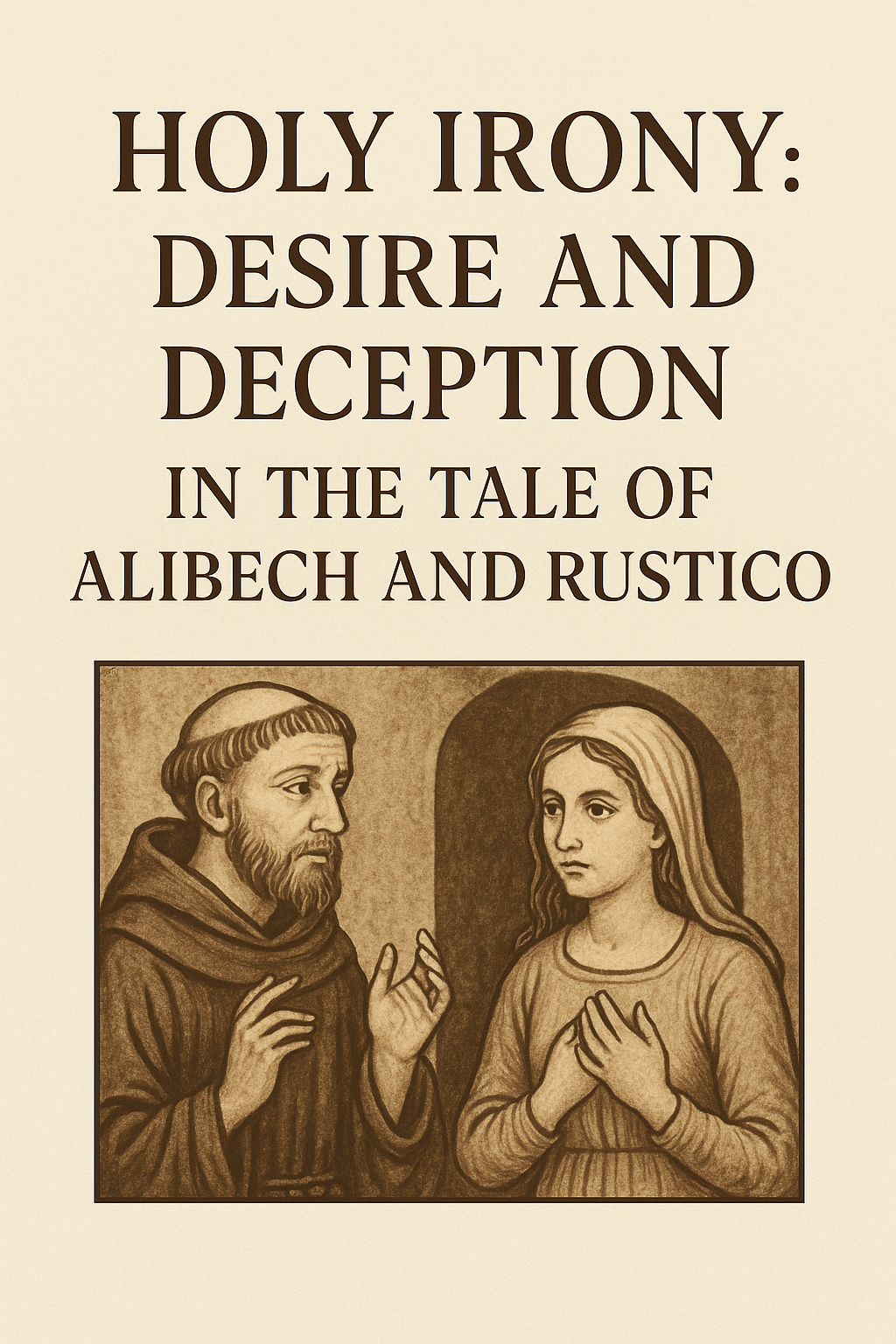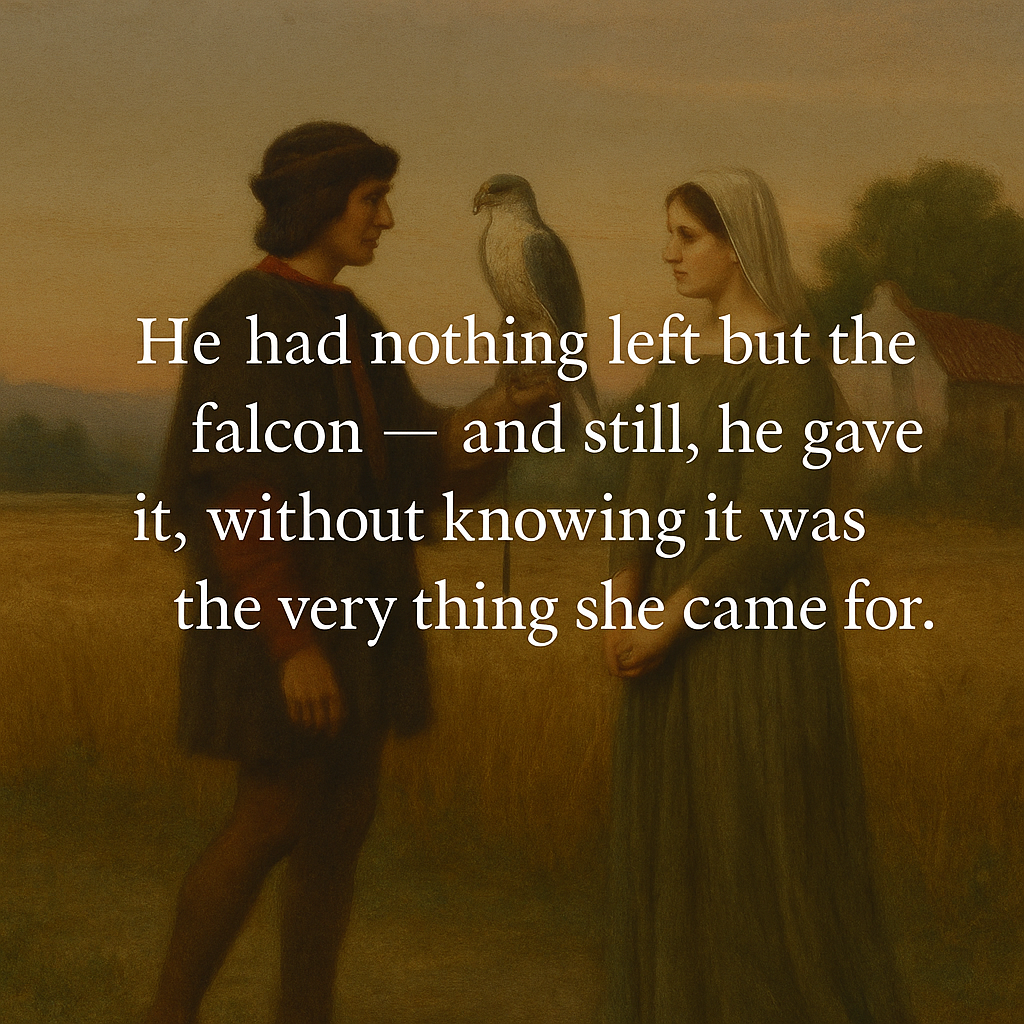Holy Irony: Desire and Deception in the Tale of Alibech and Rustico

Introduction:
Giovanni Boccaccio’s The Decameron often walks the line between sacred and profane, but few tales do this as cleverly as the story of Alibech and Rustico. Told on the third day, this tale follows a naive young woman seeking to serve God, only to be led astray by a lustful monk. Through sharp irony and humorous exaggeration, Boccaccio critiques false piety and explores the power dynamics between innocence and manipulation. This story is both a product of its time and a timeless commentary on human nature.
Summary:
Alibech is a wealthy, sheltered young woman from North Africa who wants to dedicate her life to God. She travels into the desert, hoping to learn from holy men. Eventually, she meets Rustico, a hermit who is overwhelmed by lust the moment he sees her. Pretending to teach her how to "put the devil back into hell," he convinces her to have sex, which she sees as a spiritual act. Alibech enjoys this so much that she asks to do it repeatedly, exhausting Rustico. Eventually, she is taken back to the city by her family and marries a man who values her "experience."
Analysis:
The main theme of this tale is the tension between religious appearance and human desire. Rustico represents a hypocritical figure outwardly holy but inwardly corrupt. By contrast, Alibech is innocent and sincere, though unaware of what she’s actually doing. Boccaccio uses their interaction to satirize the idea that spiritual leaders are always morally superior. The way Rustico twists religious language to justify his lust exposes how easily authority can be misused when others trust blindly.
One of the most effective literary devices in the tale is irony. Alibech believes she’s becoming closer to God, while in reality, she’s being taken advantage of. The line “putting the devil back into hell” is a clear euphemism for sex, and Boccaccio uses this phrase to mock the way people can dress up base actions in noble words. The tale also uses satire to poke fun at both religious figures and society’s expectations of women. Despite being tricked, Alibech ends up married and admired, suggesting a kind of poetic justice.
In terms of 14th-century values, the story reflects both skepticism of religious institutions and the limited understanding women were allowed to have about their own bodies and roles. At the same time, the tale shows an openness to talking about sex in a way that feels surprisingly modern. Alibech’s enjoyment of the act even when she doesn’t fully grasp it gives her a kind of agency, even if it's unintentional. The humor keeps the tale from being too harsh, but the critique is clear: appearances can be deceiving, and those in power should not always be trusted.
What makes this tale relevant today is its underlying message about abuse of authority and manipulation of language. We still see leaders who hide selfish motives behind noble causes, and people who suffer because they trust too easily. The tale reminds us to be critical thinkers and not take titles or roles at face value.
Personal Response:
I found the tale both funny and unsettling. It was surprising how openly Boccaccio dealt with sexual themes, especially in a medieval context. Rustico’s manipulation made me angry, but I appreciated how the story didn’t let him off the hook his exhaustion and eventual loss of control served as a form of payback. Alibech’s innocence was both comical and a little sad, but she ends up in a better place than her “teacher,” which made the ending satisfying.
Conclusion:
The tale of Alibech and Rustico is a sharp, entertaining critique of religious hypocrisy and blind trust. While set in the 14th century, it speaks to issues that are still with us today power, innocence, and the danger of misleading words. Boccaccio’s ability to blend humor with insight is what makes this tale and many others in The Decameron still worth reading centuries later.







